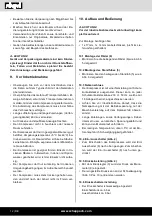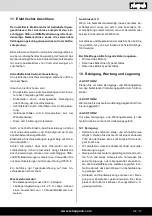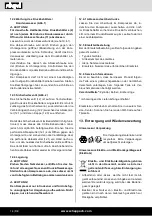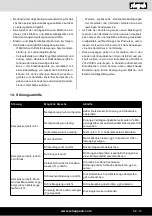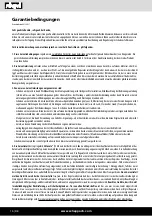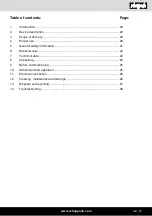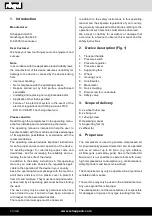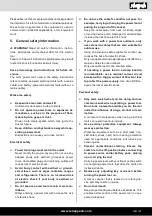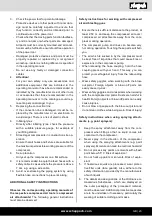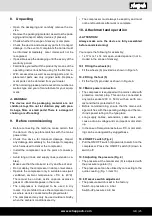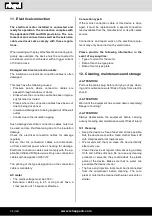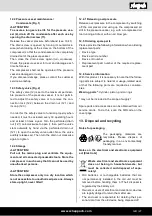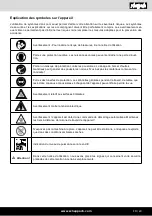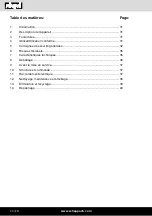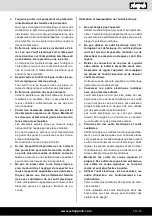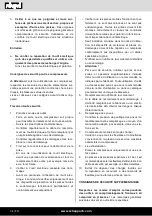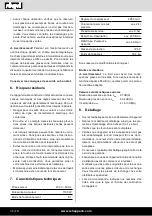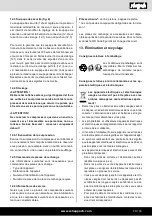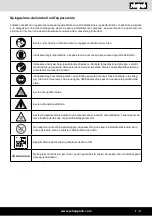
www.scheppach.com
26 | GB
Connection type X
If the mains connection cable of this device is dam
-
aged, it must be replaced with a special connection
lead available from the manufacturer or its after-sales
service.
Connections and repair work on the electrical equip-
ment may only be carried out by electricians.
Please provide the following information in the
event of any enquiries:
•
Type of current for the motor
•
Data of machine type plate
•
Data of motor type plate
12. Cleaning, maintenance and storage
m
ATTENTION!
Pull out the mains plug before carrying out any clean
-
ing and maintenance work!
Risk of injury from electric
shock!
m
ATTENTION!
Wait until the equipment has cooled down completely!
Danger of burning!
m
ATTENTION!
Always depressurise the equipment before carrying
out any cleaning and maintenance work!
Risk of injury!
12.1 Cleaning
• Keep the device as free of dust and dirt as possible.
Rub the device clean with a clean cloth or blow it off
with compressed air at low pressure.
•
We recommend that you clean the device directly
after every use.
• Clean the device at regular intervals using a damp
cloth and a little soft soap.
Do not use any cleaning
products or solvents; they could attack the plastic
parts of the device.
Make sure that no water can
penetrate the device interior.
•
The hose and injection tools must be disconnected
from the compressor before cleaning. The com-
pressor must not be cleaned with water, solvents or
similar.
11. Electrical connection
The electrical motor installed is connected and
ready for operation. The connection complies with
the applicable VDE and DIN provisions. The cus-
tomer‘s mains connection as well as the extension
cable used must also comply with these regula-
tions.
When working with spray attachments and during tem
-
porary use outdoors, the device must be connected to
a residual current circuit breaker with a trigger current
of 30 mA or less.
Damaged electrical connection cable.
The insulation on electrical connection cables is often
damaged.
This may have the following causes:
• Pressure points, where connection cables are
passed through windows or doors
• Kinks where the connection cable has been improp-
erly fastened or routed
• Places where the connection cables have been cut
due to being driven over
•
Insulation damage due to being ripped out of the wall
outlet
• Cracks due to the insulation ageing.
Such damaged electrical connection cables must not
be used and are life-threatening due to the insulation
damage.
Check the electrical connection cables for damage
regularly.
Ensure that the connection cables are disconnect-
ed from electrical power when checking for damage.
Electrical connection cables must comply with the ap
-
plicable VDE and DIN provisions.
Only use connection
cables with designation H05VV-F.
The printing of the type designation on the connection
cable is mandatory.
AC motor
• The mains voltage must be 230 V~
• Extension cables up to 25 m long must have a
cross-section of 1.5 square millimetres.

